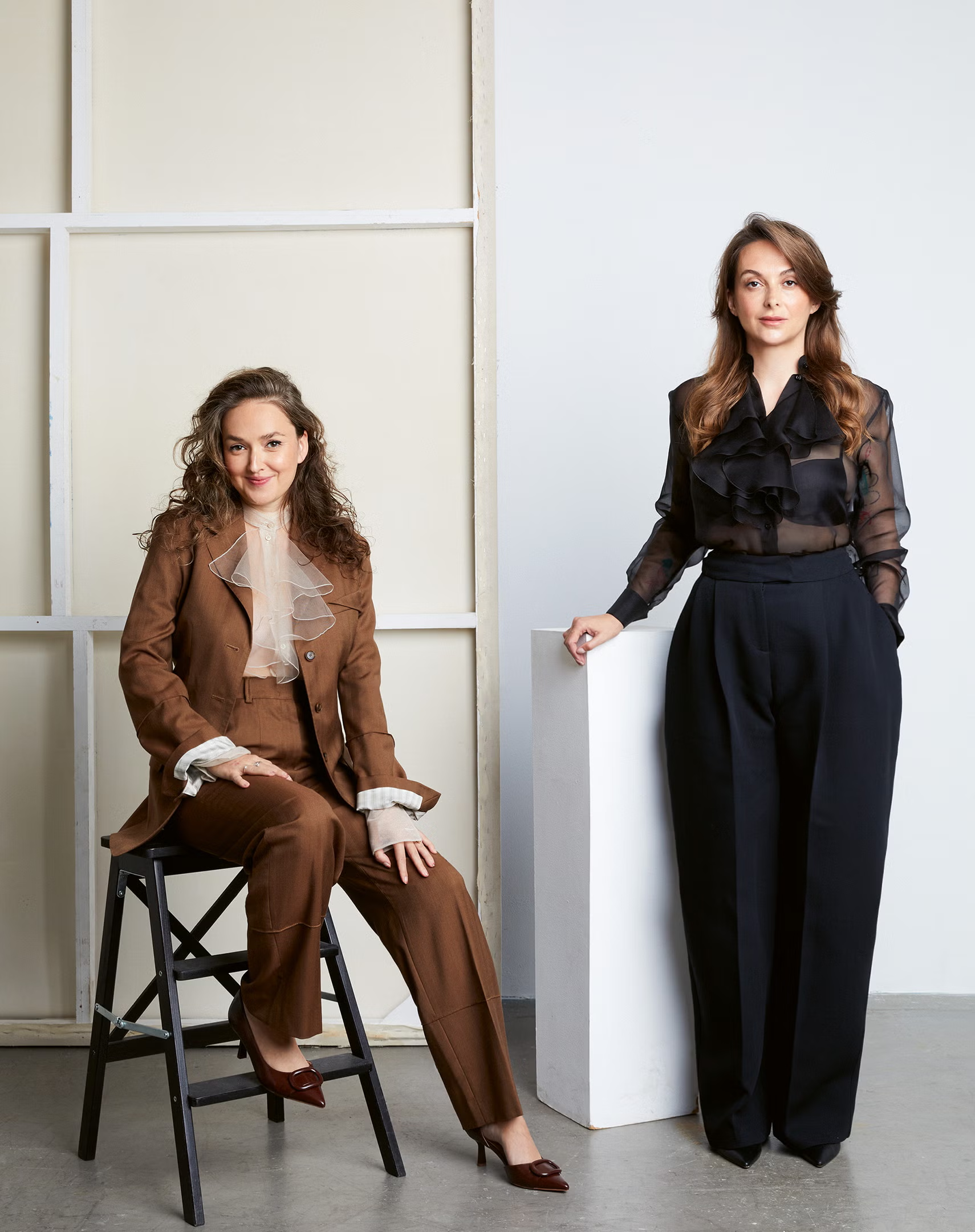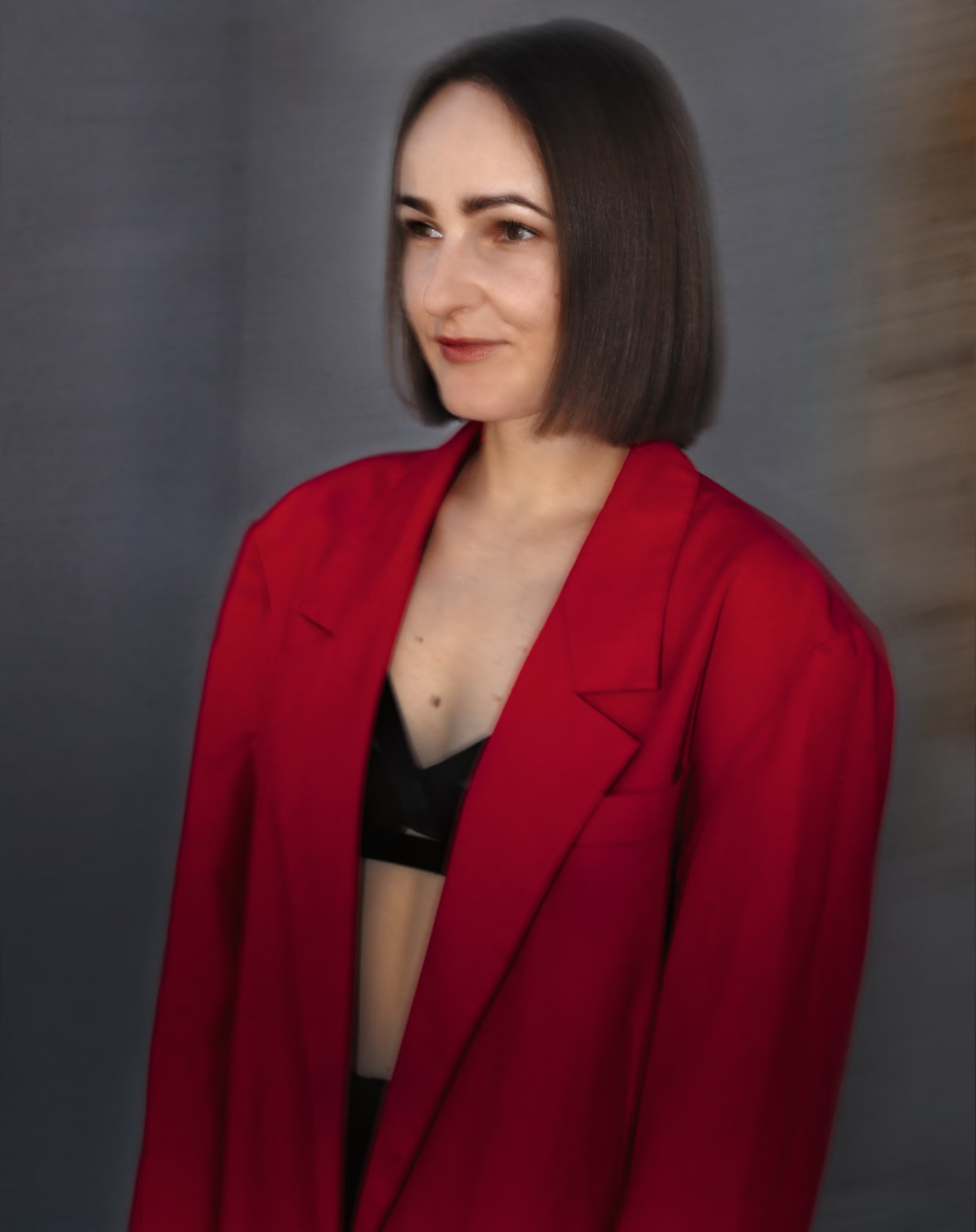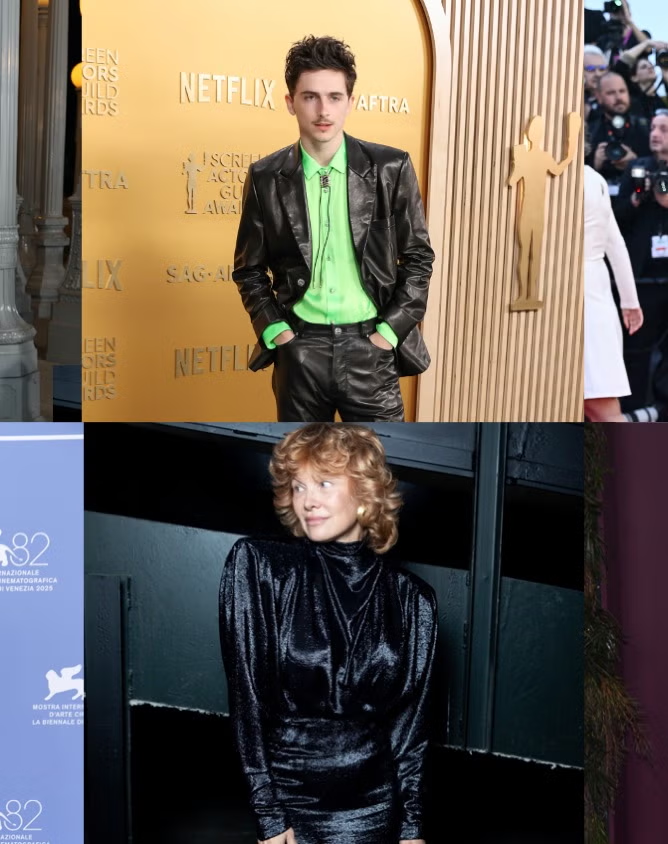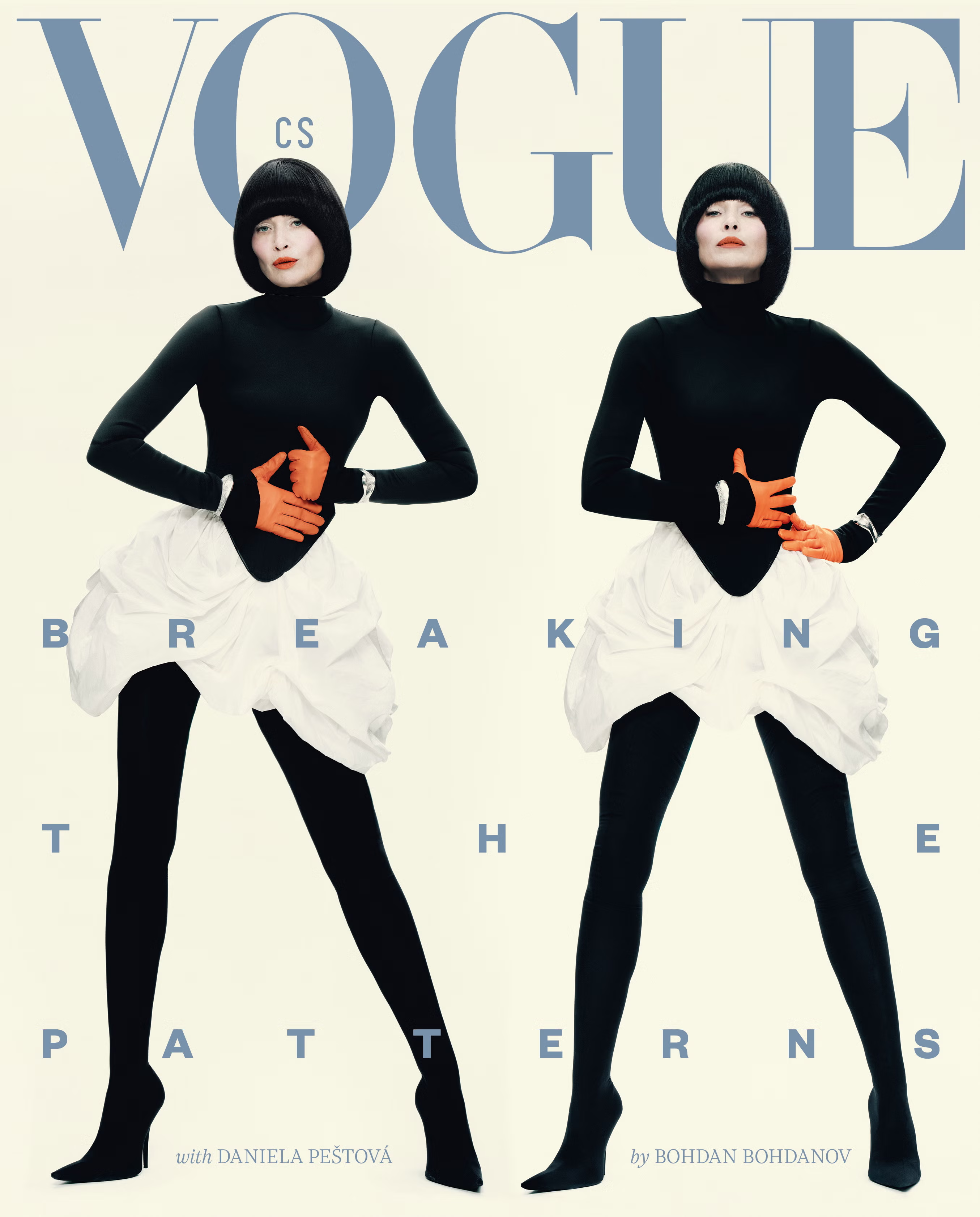Vogue CS in English
Juergen Teller: I really don't want to repeat myself
Eva Herzigová20. 1. 2021
A radical whose photographs you will recognize at first sight. A creator dancing on the edge between personal, artistic and commercial, who has created campaigns for large fashion houses and is also represented in the collections of prestigious art institutions. Juergen Teller is not afraid to make mistakes when looking for a way forward and he is never afraid to provoke. Read an exclusive interview by Editor-at-Large Vogue CS Eva Herzigová.

Foto: Self-portrait for Business of Fashion, London, 2015, Juergen Teller.
I am rather apprehensive about this interview.
Over many years I’ve been working with Juergen as a model. I could say we know each other a bit. During photoshoots he’s an open book, chatty about his latest work, travel adventures, what projects he’s got going on… I could compare it to a playdate at a friend’s house where as soon as you come in he wants to show you all his favourite games… passionate in showing you all in person and getting you absorbed into his realm. A conversation sparks up naturally and more ideas come up. I don’t think he even knows he’s doing it, but that process of making you part of his world and working off your input makes you feel special, where you feel sort of a co-creator… but this time I have a mission to accomplish. I am a journalist and I have a specific theme I need to squeeze into this playtime.
In order to prepare I read every single article he’s ever done, and I realise there is a lot more I want to know about him… I have made so many notes, I don’t really know where to start!
Juergen just arrived back home to London after a trip in Paris… I dial his number:
E: Thank you for sending me through your latest works. I have noticed Dovile your partner plays a huge part in all of them.
J: Yes, she is. She plays an enormous part in my professional life. It actually took me a couple of years to start photographing her. And first important pictures were taken in Iran. It is not that I only photograph her, we both are collaborating together on different projects.
I recently had to do an editorial project for POP magazine with Chanel and one model after another dropped out. So, then I just looked at Dovile and I was like: who needs all these people? Why won't we do it on you?
E: I mean she's hot to start with! And she's got a great sense of humour. I love this collaboration!
J: It was good right? That was very fun and the good thing is Chanel really liked the result.
E: I'm sure they did! Plus, in these pics she is a mixture of Monica Belucci with Amanda Harlech, it's very very nicely done and the Helmut Newton touch with the long nails and Karl’s cat and just everything, it's brilliant!
J: Yes, and the whole thing was shot in a day!
E: You are actually one of the privileged artists that gets away with publishing probably every single picture
that you choose as appropriate, for your stories. I don't know if you ever get censored or not, do you?
J: In some cases, certain things, for whatever reason, I have to edit it, but it's never really an important picture. It's just some sort of political scenario where I have to back off or something like that. Political scenario I mean within terms of clothing or something. Not political in the terms of Black Lives Matter or anything like that. And everything what I wanted to say never gets censored. No! But I wouldn’t say that I am in a privileged position. I worked for 35 years very hard to be in this position so it's not like I have a privilege just falling from the sky. I kind of worked my way, made my point through all my work in steps to be in this position.
E: I think you're breaking a lot of aesthetic codes with what you’re offering to public to see today. The concept of a taboo is there. Do you think every photographer gets away with publishing every single picture they want? Even looking at the Chanel story, I have it right in front of me, Dovile is bending down on the Chanel carpet. I know it can be seen as an exercising kind of pose.
J: But that's a Chanel yoga mat.
E: Yes correct! It looks like a yoga pose but it can also be seen as a religious posture…
J: Of course, a prayer! She’s praying to fashion.
J: I got really inspired about that they are doing these tennis balls, these surfboards. Chanel surfboards? That’s insane. So, I'm playing with fantasy, and, of course, I like sports, and then I thought: oh my god! I know this crazy outdoor gym in Paris. Then I saw all these Chanel sports accessories, so I thought I would throw all this stuff into one thing and mix it all up and have fun with it, you know?
E: I know that you've been working towards this freedom of expression with every step you've taken since a long time and it has all been thought through. I'm sure there are many different photographers that have tried to pull through some things like that, but they will never achieve it.
J: I don't know, I can't really speak much for other photographers. Well, in general I always like to draw inspiration from my own life and people who inspire me. I like sports, I like forest, I like hiking, I like eating, so a lot of that you see in stories, say, for POP with Chanel or the Forest story, when Dovile and I went on holiday and we ended up in South Tirol. We went for five-hour hikes and then I have a portfolio about these beautiful waterfalls and the forests. Or If You Pay Attention story about our trip in Iran.
I also want to be careful; I don't want to continuously only churn out fashion stories.
Nobuyoshi Araki and I met in 1991 and we admire each other’s work. In 2019 we decided to have an exhibition together in Tokyo, which also resulted in a book called Araki Teller Leben und Tod. So, my interests are open and wide as you can see. I like to work commercially, and I like to do my own things. So, it's about the balance of where you find inspiration and where you do things. I would be so bored if I would only photograph fashion because you would wear the inspiration out dry and I really don't want to repeat myself as such. But I have to say, I love fashion, I love the fantasy and it gives me an enormous amount of the possibilities. I make up my own fairy tales.
E: I understand you photograph you know life, when you travel, when you walk around, when you do sports, when you go on walks but when you're down, when you feel overwhelmed by something in your life, I don't want to be personal, but how do you centre yourself or how do you find your way?
J: I photograph myself being miserable for example… I did a story when I was separating from my family, I was on my own in the studio and then it was very sad and melancholic, and I called the story Self Reflections, Melancholy and Blood Oranges. And then I photographed myself being reflective. You always have to try to draw out something positive out of something negative. It's also a bit like a therapy to photograph things and photograph yourself.
E: I love yourself portraits and I love one of the latest ones you have done, one with all the retouching notes. I had a good laugh about that.
J: It's quite a while ago when Tim Blanks interviewed me for Business of Fashion and they wanted to have a self-portrait and I'm thinking: Oh God, where do I draw this from? And then I just got so annoyed with all these clients sending all these endless notes about this has to retouched and that has to be retouched, then I just thought: Let's just do this!
E: And like you’ve pointed out writing all over the image, these are in a little forms of taboo to the final client - retouch the belly, retouch the wrinkles, lighten the skin… and by not adhering to this concept of retouching you challenge of what might be unacceptable to many and choosing you as the photographer to give aesthetical direction to one the biggest brands in the world.
J: It's a bit back to… hopefully that doesn’t sound stupid… to humanity, to fragility of life, to something I would say normal. Everything is so hyper retouched, everything is so bonkers and boring and… I bring I would say a normal fantasy into it and not some sort of vanity retouched scenario. It's celebrating life in a way.
E:Have you actually retouched a photo before?
J: Of course, I have. But if it's my own work, I don't need to retouch anything. But if there's a client there and the thing looks a bit weird or as you said, they didn't produce the shoes and I have to make it light brown instead of dark brown and all this stuff, then of course I do that.
E: I was really happy to see you're working with Dovile and she gets credited… I mean your trip in Iran, my goodness, I read the article that you sent me with the pictures… Geez! What an ending!
J: Yes, it was crazy! I mean when we landed our hair stood up, but the whole thing is also taking risks and having an adventure, letting situations come to you, being free and being opened.
E: I mean I love the layout of that story. You really get a good idea of that place.
J: You're just looking around and you find something pretty. It's just there and not many people see it in such a way. Then of course we did it last Christmas/New Year and then I got so busy with commercial work and I was like: Oh my god, all I want to do is work on this Iran story and between Dovile and I we did 15 000 photographs. There was no time, and she says: Oh, I have a little bit of time here and there too and I was thinking: No, I have just this commercial work in my head, I want to have quiet time just working on this Iran project. And then Covid! When the world slowed down, commercial work slowed down, the deadlines and the pressure disappeared. So, we found ourselves alone at the studio editing these pictures for three weeks and printing them out, putting the layout together and it was like heaven!
E: You had Dovile naked in that same story. She is eating a banana in a chador… I mean it's so poignant to what these women must feel like sometimes!
J: Women wearing chadors looked very mysterious and beautiful. Many of them were wearing heavy dark eye make-up, which made them even more mysterious. Dovile was very intrigued by them and wondered how it would feel to be in this piece of clothing. We asked our female guide Eli whether it would be ok for Dovile to wear the chador. We wanted to respect the culture and religion. Shes said yes, of course, it is fine.
It became way more interesting to photograph Dovile. She bacame this character that traveled with me for the next four days. Having this character with us, gave us a chance to put ourselves into Iran and the pictures became so much more interesting than just simple tourist photographs.
So yeah, we were sitting in the car driving through the desert and she was eating the banana and there’s that picture.
E: … and then you go back to the hotel and there she is, laying on the bed without any clothes.
J: But this is just… you know those people are naked too.
E: Yes, but these women aren’t allowed to even consider the thought of being seen naked and there you are seeing the same woman dressed up in chador and next page you see her laying naked. It's just so subtle and so beautiful. It just evokes in me something very touching but also slightly painful.
J: Yes of course. And I wouldn't have her laying down in some sort of sexy pose because that would be completely wrong.
E: Just the combination of two photos of her completely covered up and next to it completely naked. I was just really startled by the power of it and subtlety and intelligence. I'm discovering you in a completely different light. I've been modelling for you before and I loved you because of your energy, the way you are thinking, and you shoot but I have a completely different image of you now.
J: First, I think a lot before the project. Then, there is this collaboration with the subject and a lot of things happen instinctively, you just do it. And then there’s another phase, the afterwards, when you think what goes out and what goes in and what are the combinations, what is the layout. And what does everything mean. I spend a lot of time in the studio doing that stuff. That takes the real time and the concentration.
E: What is it that makes you choose that one? How do you make the call?
J: What I'm talking about is more like how you put the combinations. It's what you think and what makes sense. It's like a little novella, you guide people through to what you want them to see, what you want them to experience.
E: Chanel has always been kind of polished and knowing your work, what you're gonna bring them, something fresh, something new. This is a new client, you've always had a long-term relationships with your clients, how is the process of finding the theme, direction etc.
j: Well, it started when I did an editorial project for System magazine with Chanel and they liked it very much. Then they came back asking us to work on the four projects for their Metiers d’Art 2020/21 collection. They had a very clear idea of that they wanted from me, but within these different projects they gave me a complete creative freedom and trusted my ideas and instincts. It was a process of true collaboration, extremely respectful and very pleasant. We are very proud of we have achieved together.
Vogue
Doporučuje

Vogue Leaders
Iniciativa Girls in Film Prague bojuje za větší zastoupení žen a queer osob ve filmu
Julie Šafová15. 12. 2025
Vogue Leaders
Autentická realita je pro mně důležitým zdrojem inspirace, říká kostýmní výtvarnice Laura Štorcelová
Monika Sládková14. 12. 2025
Celebrity
